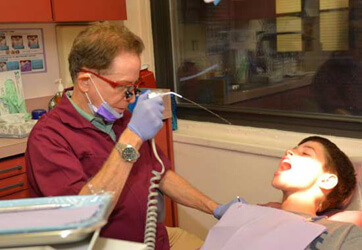Have you ever wondered about the intricacies of your dental structure and the specific numbering system dentists use to identify teeth? Understanding the teeth numbers chart for adults is crucial for proper oral health maintenance. Delving into this topic can shed light on dental anatomy, procedures, and overall dental care.
Understanding The Teeth Numbers Chart
The tooth chart adult typically follows a universally accepted numbering system, aiding dentists in precise communication and documentation. This chart divides the mouth into four quadrants: upper right, upper left, lower right, and lower left.
Decoding The Numbering System
Each tooth in the chart has its unique number. Starting from the upper right side, the first tooth is the upper right third molar, numbered as tooth number 1. The numbering progresses along the upper arch, reaching tooth number 16, the upper left third molar. The sequence then continues along the lower arch, concluding with tooth number 32, the lower right third molar.
Significance Of Tooth Numbers
Understanding the tooth numbering system assists in dental records management, treatment planning, and communication between dental professionals. Additionally, it enables patients to comprehend discussions about specific teeth and their associated issues or treatments.
Dental Procedures And The Teeth Numbers Chart
During dental treatments, dentists refer to this chart to accurately identify problem areas or teeth requiring attention. Whether it’s a routine cleaning or a complex dental procedure, the chart helps in pinpointing the exact location of concern.
Importance Of Regular Dental Check-Ups
Regular dental check-ups are essential for maintaining optimal oral health. Dentists use the teeth numbers chart to monitor changes, track dental issues, and provide appropriate treatment as needed.
How To Use The Teeth Numbers Chart For Self-Check
Knowing the numbering system empowers individuals to identify areas of concern in their own mouths. Observing discomfort or irregularities and noting the specific tooth number can aid in effective communication with dental professionals.
Common Dental Issues And Associated Tooth Numbers
Understanding which tooth corresponds to specific dental problems—like cavities, gum disease, or tooth decay—helps in addressing issues promptly. Being aware of the affected tooth number enables better communication with the dentist.
Conclusion
The teeth numbers chart for adults serves as a fundamental tool in dentistry, facilitating effective communication and precise identification of dental issues. Understanding this chart empowers individuals to take charge of their oral health by enabling better communication with dental professionals and promoting proactive dental care.
Next time you’re at the dentist, take a moment to explore your teeth numbers chart. It’s a gateway to understanding the intricacies of your dental structure and a valuable tool for maintaining a healthy smile throughout life.



